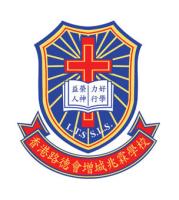
LUTHERAN TSANG SHING SIU LEUN SCHOOL
ESTATE PRIMARY SCHOOL NO 5 PHASE III, BUTTERFLY ESTATE AREA 28 TUEN MUN NEW TERRITORIES
Based upon Christianity, we practise whole-person education by providing quality learning environment with love and care. We prioritize Biliteracy and Trilingualism by emphasizing English and Putonghua education in an authentic and anxiety-free context. Hence, our students are well equipped with bilingual communication competence which is indispensable for further studies and career development in this increasingly globalized world. By implementing life-impact education and in pursuit of beautiful life, we nurture students' positive self-concept and attitude towards people and society.
Overview
| TUEN MUN / 70 | |
| Primary | |
| Aided / CO-EDUCATIONAL |
Primary School Profile
School Information
| Supervisor / Chairman of Management Committee | Dr. Yung Tse You |
| School Head | Principal Ip Luk Ying |
| Finance Type | Aided |
| Session | Whole Day |
| Student Gender | Co-educational |
| Medium of Instruction | Chinese(incl.: Putonghua) and English |
| Sponsoring Body | Lutheran Church - HK Synod Ltd |
| Religion | Protestantism / Christianity |
| Year of Commencement of Operation | 2005 |
| School Motto | Love to Learn, Practise with Strength, Glorify God, Benefit People |
| Area Occupied by the School | About 5,800 Sq. M |
Annual School Charges
| School Fees | - |
| Activity Fees | - |
| PTA Fees | "$40" |
| Approved Charges for non-standard items | "Upgrading Air circulation devices, Anti-mosquito devices and epidemic prevention equipment $310 per school year." |
| Other Charges | Reissue of Student Smart Card $40. |
Teaching Staff Information
| Number of teaching posts in the approved establishment | 47 |
| Total number of teachers in the school | 55 |
| Qualifications and professional training (%) | |
| Teacher Certificate / Diploma in Education | 93% |
| Bachelor Degree | 100% |
| Master/ Doctorate Degree or above | 27% |
| Special Education Training | 29% |
| Years of Experience (%) | |
| 0 - 4 years | 44% |
| 5 - 9 years | 18% |
| 10 years or above | 38% |
Class Structure
| P1 Number of classes | 4 |
| P2 Number of classes | 3 |
| P3 Number of classes | 4 |
| P4 Number of classes | 5 |
| P5 Number of classes | 4 |
| P6 Number of classes | 4 |
| Total | 24 |
School Facilities
| Number of Classroom(s) | 24 |
| Number of School Hall(s) | 1 |
| Number of Playground(s) | 3 |
| Number of Library(ies) | 1 |
| Special Rooms | Computer and STEAM Room, Campus TV and Studio, Music Room, Art Room, Dance Room, Conference Room, Medical Room, Conference Room, Self Study Room, English Room, Pastor Room. |
| Facility(ies) for Supporting Students with Special Educational Needs | Ramp, Accessible lift and Accessible toilet. |
| Others | Activity Centre, Student Guidance Room, PTA Room, Home Economics Room, Educational Psychologist Room, Speech Therapy Room. |
Mode Of Teaching
| Mode of teaching at different levels | 1. The English and Putonghua Immersion Programme is launched to encourage students to use the target languages frequently in an anxiety-free environment. 2. Each Year from March to May, students from P.3 to P.6 are chosen to join a student exchange programme with an Australian primary school for two weeks. Similar programmes are organised to places like Japan and Taiwan. |
| Class Remarks | Small class teaching of Intensive Enhancement and Remedial Teaching Programme from P.3 to P.6 in English and Maths. Other after-school tutorial groups of Chinese, English and Maths are provided for students with learning difficulties. |
| Number of test(s) per year | 2 |
| Number of exam(s) per year | 2 |
| Diversified Assessment for Learning | Formative and summative assessments are available for all levels in Chinese, English, Maths and General Studies. Informal assessments such as task based assignments and group projects are employed to assess students' competency in Music, Visual Arts, PE and IT. Learning accommodation is provided for students with special needs. |
| Streaming arrangement | P.3 to P.6 students are split up into different classes in their Mathematics lessons. Classes of average ability have smaller class size with curriculum adaptation. Classes of higher ability have intensive language and generic training. |